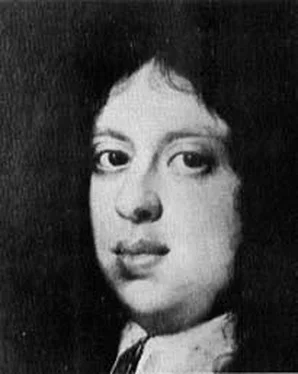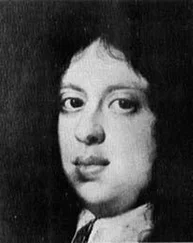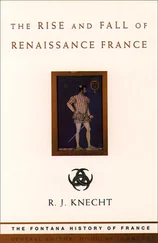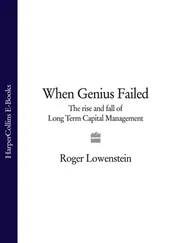On learning what had happened Lorenzo immediately rode over to Volterra. He did what he could to reassure the people that his fellow citizens in Florence profoundly regretted the outrages, and he distributed money to those who had suffered loss. His regret was obviously sincere; but it was impossible to overlook the fact that it was he who had advocated the use of force, that it was he who had employed the Count of Urbino, that it was he who had approved the restoration of the mines to the original concessionaires , and that it was he who had pressed for the withdrawal of Volterra’s rights of self-government. And in Volterra these things are not forgotten even to this day.
‘Do what you wish provided there be no killing’
FANCESCO DELLA Rovere, to whom Lorenzo had offered Florence’s congratulations on his election in 1471 as pope sixtus IV, was a big, gruff, toothless man with a massive head, a small, squashed nose and an intimidating expression. Born in a poor fishing community near savona, he had entered the franciscan order at a very early age and, thanks to a highly developed gift for preaching, a taste for learning and piety, some charm and much ambition, he was made general of the order before he was fifty and a cardinal three years later. Since then he had been unremitting in granting favours, offices, money, lands and power to innumerable relations of dubious merit of whom his sister’s family were the most demanding. Six of his nephews were made cardinals, and for those who were not in the church he endeavoured to find profitable lordships in the papal states.
One of these nephews, the witty, amiable and ostentatious Piero Riario, was created Patriarch of Constantinople, Abbot of St Ambrose, Bishop of Treviso, Mende, Spalato and Senigallia as well as Archbishop of Florence. Another nephew, Girolamo Riario, whom many believed to be, in fact, his son, was even more importunate. A fat, uncouth, rowdy young man, Girolamo had his eye on Imola as a base from which to build up larger estates in the Romagna. This small town between Bologna and Forll had recently been sold by Taddeo Manfredi to the Duke of Milan whose natural daughter, Caterina Sforza, seemed to the Pope an ideal bride for Girolamo. Negotations were immediately opened and the Medici bank in Rome was asked to raise the 40,000 ducats necessary for the purchase of Imola.
Lorenzo was much disturbed by this request. So far, his relations with the Pope had been perfectly cordial. He had been greeted ‘very honourably’ in Rome where he had been assured that the Medici were to remain bankers to the Curia and agents for the alum mines at Tolfa. He had been presented with two marble heads, one of Augustus, the other of Agrippa; and he had been offered various treasures from the collections of Paul II, including intaglios, cameos, vases and cups in semi-precious stones, which he was able to buy at a most reasonable price. Lorenzo was naturally anxious that this promising start to his association with the new Pope should not be undermined; but he also recognized that the strategically placed town of Imola, which dominated the road from Rimini to Bologna and which he had hoped to buy himself for Florence, must on no account fall into the hands of the Pope. So when the application for a loan was placed before him he made excuses for not granting it. Undeterred, the Pope turned to the Medici’s leading rivals as Florentine bankers in Rome, the Pazzi, who were delighted to be of service and to obtain the coveted Curial account.
Having settled Girolamo comfortably at Imola, the Pope now turned his attention to another nephew, Giovanni della Rovere, who, although Prefect of Rome and Lord of Mondovi in Piedmont, was still anxious to get the same sort of foothold in the Romagna as his cousin had done. Sixtus obligingly fixed this for him by arranging a marriage with the eldest daughter of Duke Federigo of Urbino, which not only brought the territorial influence of the Pope closer than ever to the Florentine frontier, but also detached a highly successful condottiere from Florentine service.
By now, relations between Lorenzo and the Curia were growing excessively strained; and when the Pope endeavoured to dislodge Niccolö Vitelli from Città di Castello, a town near the Florentine outpost of Borgo San Sepolcro – which had been bought in Cosimo’s day with funds confiscated from a Jewish pawnbroker – Florence and the Papacy came close to war. Lorenzo raised 6,000 men to help defend Vitelli, which the Pope considered the grossest effrontery; and after Vitelli, despite this assistance, had been forced to surrender, he was given an honourable welcome in Florence, which antagonized Sixtus even more.
There was yet further trouble in 1474 when Piero Riario died, worn out by his relentless enjoyment of the rich benefices his uncle had bestowed upon him; and the Archbishopric of Florence became vacant once more. Lorenzo succeeded in having his brother-in-law, Rinaldo Orsini, appointed Riario’s successor; but he could not prevent the Pope nominating Francesco Salviati as Archbishop of Pisa, even though an undertaking had been given that no appointments to ecclesiastical benefices within the Republic should be made without the agreement of the Signoria . Since the Pope chose to ignore this undertaking, Lorenzo declined to admit Salviati into Tuscany; and for three years Salviati was kept waiting in Rome, frustrated, embittered and ready to lend his support to any anti-Medicean plot which might be proposed to him.
Lorenzo had other dangerous enemies in Rome. In order to maintain the uncertain peace in north Italy, he had proposed a mutual alliance between Florence, Milan and Venice. But, far from achieving peace, the proposal almost provoked another war, for the Pope angrily condemned the new league as aimed at himself, while King Ferrante of Naples was deeply suspicious of an alliance which had been formed without his being consulted and which seemed to threaten his interests in the Adriatic. The Pope and the King of Naples, whose traditional antagonism to the Papacy had been noticeably softened by the marriage of one of King Ferrante’s illegitimate daughters to Leonardo della Rovere – another nephew from the Pope’s seemingly inexhaustible supply – were now thrown closer than ever together in mutual distrust of the young upstart from Florence.
Lorenzo’s difficulties were made all the more complicated when, on St Stephen’s Day, 1476, his firm ally, Galeazzo Maria Sforza, was stabbed to death by three young assassins on his way to Mass. For Galeazzo Maria’s son was a small boy of seven. His mother declared herself Regent; but a disorderly gaggle of uncles clamoured for their brother’s succession. And until their quarrel was settled, Lorenzo could hope for no help from Milan against the conspirators now gathering to destroy him.
Three of these conspirators met in Rome during the early weeks of the new year, 1477. They were Girolamo Riario, whose ambitions were far from satisfied by the lordship of Imola; Francesco Salviati, the disgruntled Archbishop-designate of Pisa, who hoped to obtain the more distinguished Archbishopric of Florence; and Francesco de’ Pazzi, manager of the Pazzi family bank in Rome, a small, fidgety young man of’great arrogance and pretensions’, who thought that the time had now come for the Pazzi to take over as rulers of Florence from the Medici.
The Pazzi were a much older family than the Medici. 1One of their forebears, Pazzo de’ Pazzi, had been on the First Crusade and had returned to Florence with some flints from the altar of the Holy Sepulchre at Jerusalem which were deposited in the church of Sant’ Apostoli. 2They had loftily scorned trade up till the beginning of the thirteenth century; but in 1342 they had renounced their ancient lineage so as to be declared popolani and thus render themselves qualified for government office. They had subsequently made a fortune in banking. The head of the family in the early fifteenth century was Andrea de’ Pazzi who spent a sizable part of that fortune in commissioning Brunelleschi to build the Pazzi Chapel next to Santa Croce. 3His son, Piero, spent a good deal more of it on a fine library. But Piero’s brother, Jacopo, who succeeded him in 1464, was not so concerned to spend money as to conserve it.
Читать дальше











